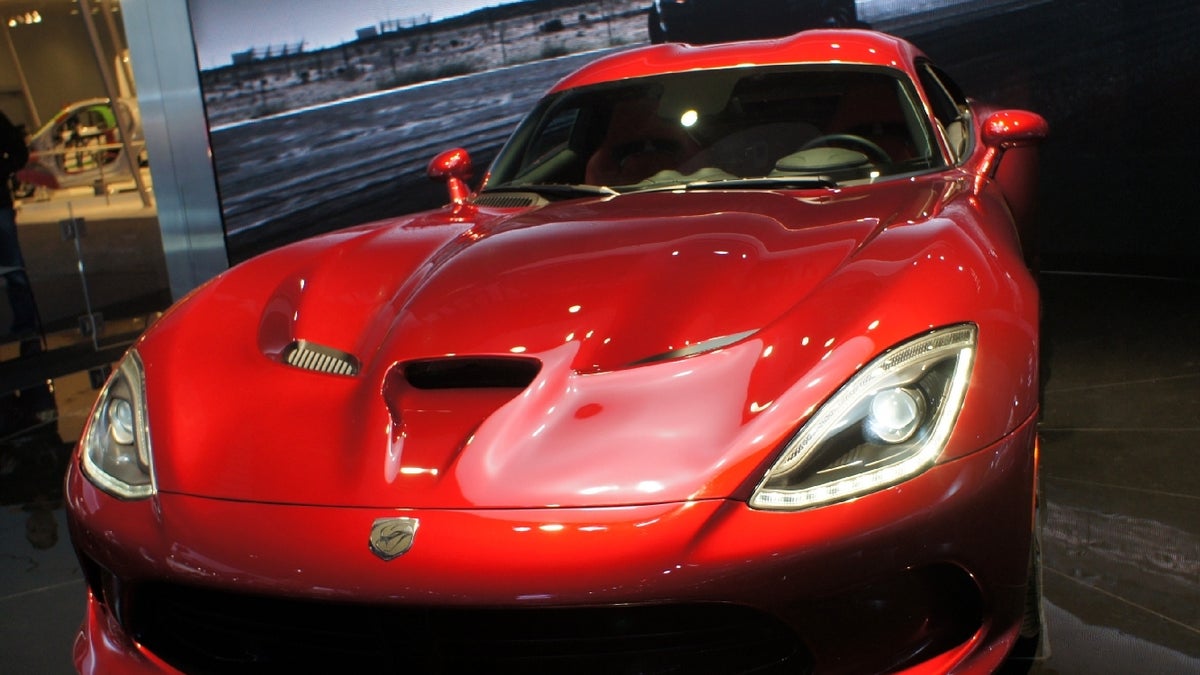Viper comes back, teeth sharpened
At the 2012 New York International Auto Show, Chrysler's SRT division, a new breakout group, showed off its latest work in the form of the 2013 Viper.

NEW YORK--Fans of the old Dodge Viper may be disappointed in its rebirth. While still driven by a ridiculously powerful engine, and maintaining its cabin far to the back of the car, the 2013 SRT Viper comes with unforeseen refinement.
Instead of strict power to the wheels with no electronic interference, the new Viper comes with traction and stability control. An active suspension system lets the driver choose between street and track modes. Body work around its side pipe should even protect the legs of passengers getting out of the cabin.
But it would be foolish to lament the previously unfettered Viper, as technology has proven itself again and again in performance cars. The traction system on the new Viper enables launch control, making it possible to actually use all of the car's massive torque. The suspension system's street mode should also make possible to enjoy a Sunday drive, rather than seeking out a chiropractor the next Monday.
With the 2013 Viper, it looks like the new SRT group was challenged to build a world-class super car, able to hold its own against the Ferraris and Lamborghinis of the world. And it may have well succeeded.
The new Viper gets many refinements over the old model. While retaining the same basic body design, new aerodynamic touches reduce drag. The hood and rear deck are made of carbon fiber, while the doors are made of aluminum, all helping to shave 100 pounds of weight off the car.
Even the badge got a new design, suggested by Viper fans.
The seat shells are molded from carbon fiber and Kevlar, also helping to hold down weight. SRT raised the roof over the driver and passenger seats to accommodate helmets. But the cabin is also more spacious than on the previous version of the car.
What might really bother old Viper fans are the electronics used in the cabin. The LCD instrument cluster is more GT-R than Barney Oldfield, letting the driver configure the information display using steering wheel buttons. SRT even makes Chrysler's UConnect navigation head units available for the car.
Despite all the niceties, SRT still throws big displacement under the hood with an 8.4-liter V-10. Made of aluminum, it generates 640 horsepower and 600 pound-feet of torque, the most torque of any naturally aspirated production engine, according to SRT.
Throwing any notion of fuel economy to the wind, SRT shortened the ratios of the Viper's six-speed manual transmission. As the car hits its top speed in its top gear, every gear is given its full potential, occupying its own distinct place in the powerband. SRT has not yet said what sort of fuel economy the Viper will get, and it's probably best not to ask.
The new Viper comes out in base and GTS models late this year.

